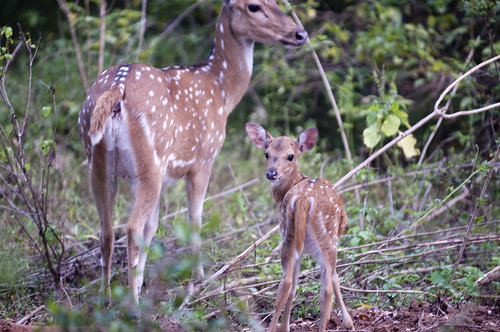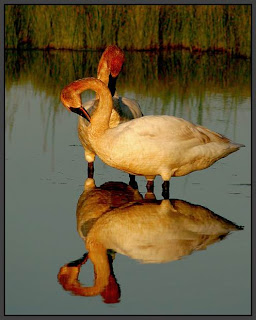BEAUTIFUL SRILANKA
 Though Srilanka is very small in land area,The great diversity in habitats harbors are a rich and diverse fauna and flora.With many Species endemic to the island.Historically as well as in the modern era.Successive rulers and Governments of Srilanka have strived to provide Sanctuary and Protection to our beautiful wild life.Today, especially where human Interest are in direct conflict. It is imperative that private organization with resources step into and fill the areas that need immediate attention: Environmental education,long term research,and to develop integrated projects for community based conservation.
Though Srilanka is very small in land area,The great diversity in habitats harbors are a rich and diverse fauna and flora.With many Species endemic to the island.Historically as well as in the modern era.Successive rulers and Governments of Srilanka have strived to provide Sanctuary and Protection to our beautiful wild life.Today, especially where human Interest are in direct conflict. It is imperative that private organization with resources step into and fill the areas that need immediate attention: Environmental education,long term research,and to develop integrated projects for community based conservation. Srilanka has a rich and exotic variety of wild life. The jungle of Srilanka abound in a variety of wild life.The best known National park is the RUHUNU NATIONAL PARK at YALA .There are also many beautiful National park in Srilanka
Yala national park
Sinharaja forest
 The only ever green rain forest in Srilanka.Which belongs to few remaining virgin forests in the world.,is home to hundreds of indigenous flora and many kinds of birds. beasts and reptiles. The Sinharaja forest,11,187 hectares in all was declared a men and biosphhere reserve (M.B.R) in1978 and it became a national heritage wilderness area under the national heritage wilderness area act in 1988.This virgin forest was named world heritage site by UNESCO in 1989. This is Srilanka's most important rain forest. The forest hasThis is Srilanka's most important rain forest. The forest has tall trees growing in close proximity but winding pathes make it.easy to walk along the forest floor.it is in habited by water minitors , macaques ,leopards,giant squirrels, purple -faced ,leaf monkeys and many animals.
The only ever green rain forest in Srilanka.Which belongs to few remaining virgin forests in the world.,is home to hundreds of indigenous flora and many kinds of birds. beasts and reptiles. The Sinharaja forest,11,187 hectares in all was declared a men and biosphhere reserve (M.B.R) in1978 and it became a national heritage wilderness area under the national heritage wilderness area act in 1988.This virgin forest was named world heritage site by UNESCO in 1989. This is Srilanka's most important rain forest. The forest hasThis is Srilanka's most important rain forest. The forest has tall trees growing in close proximity but winding pathes make it.easy to walk along the forest floor.it is in habited by water minitors , macaques ,leopards,giant squirrels, purple -faced ,leaf monkeys and many animals. The Sinharaja falls within a rain falls range of 3,000 to6,000 millimeters and even diest season records a surprisingingly considerable amount of rain falls.
Elephant orphanage
An orphanage for elephants has been set up by the department of National zoological gardens ,at pinnawela ,90km. from colombo. It was established in 1975 and several animals brought here at the inception are now mature enough for breeding ,which is the ultimate aim of the institution. Entrance fees: Rs.75 per adult and Rs.40 per child.
The Pinnawela elephant orphanage was started in 1975 by the department of wildlife on a twenty five acre/coconut property on the maha oya river at rambukkana .The orphanage was
primarily designed to offord care and protection to the many baby elephants found in the jungle without their mothers.In most of these cases the mother had either died or been killed. There are only a few elephant orphanages in the world.
DAILY ACTIVITIES
Ø AT Pinnawela an attempt was made to simulate in a limited way,the conditions in the wild animals are allowed to roam freely during the way and herd structure allowed to form.
Ø
Ø 8.000 The babies are fed on milk in the morning and allowed to range freely on the 12 acres large grass land.
Ø
Ø 10.00 Each morning and after noon 14.00 the animals are walked 400 meters to the river maha oya flora two hour bath.
Ø
Ø Between 16.30 and 18.00 in the evening the animals are taken to their stalls and tethered for the night.
Horton plains national park
The Horton plains national park is the only national park situated in the hill country and falls within the Nuwara Eliya district and is 200 km away from colombo
Horton plains surrounded most popular and important mountains .They are Kirigalpottha mountain (second in srilanka) and Totupola mountain (third in srilanka). Accessing those in at this area is easier.About 10.5 km needs to travel to the top of the Kirigalpottha mountain.Totupola mountain accessing way is at Pattipola entrance.Baker's water fall is popular water fall which is at Horton plains.
If you will visit Srilanka don't miss this place .Because this place is very nice.
Baker's water fall
Horton plains is a botanical treasure trove and home to many endemic species of plants such as Bamboos and tree ferns .The most prominent canopy tree is the umbrella -shaped and gnarled Keena(callophylum )with white Flawers contrasting with striking scarlet rhododendrons (Rhododendron zelanicum).Other common flowering plant's are Aristea Ekloni and Excum macrathum both having tiny blue flawers .The aroma of a flowering purple-leafed Nillu attracts a variety wild life to the area.
Uda walawa national park
Nestles in the borders of the Monaragala and Rathnapura districts,covers an area of 30,821 hectares.The park was declared uda walawa national park on June 30,1972 and since then it has become a safe home and a refuge to the animals.who had lost their original habitats ,according to data ,the highest number of wild and tamed elephants live in this park.
This park is famous for the Elephants (Elephant maximums).There are herds of Elephant feeding in the grass lands. The samba deer , spotted deer, muntjac , wild boar,and water buffalo are re-establishing them selves .Other mammals include:toque macaque endemic ,common languor,jackal,toddy cat , leopard,Indian bush rat, mouse, and the endemic.
 The infauna includes large numbers of warblers, together with the usual low country birds in forested areas and a variety of rep tors .water birds , faun on the reservoir include rare visitors such as Indian cormorant and osprey Srilanka jungle fowl , Malabar , pied Horonbill , endemic gray horonbill ,and brown -capped babbler.
The infauna includes large numbers of warblers, together with the usual low country birds in forested areas and a variety of rep tors .water birds , faun on the reservoir include rare visitors such as Indian cormorant and osprey Srilanka jungle fowl , Malabar , pied Horonbill , endemic gray horonbill ,and brown -capped babbler. Vegetation ,originally forested,grass land thorn-scrub now predominate.Tree species include satin(chloroxylon swietenia) , Halmilla(berrya cordifolia) , Ebony(diospyros ebenum) , Ehela(cassia fistula) , Kolon(adina cordifolla) , Milla(vitex pinnata) , Kon(schleichera oleosa) and kunumella(diospyros ovalifolia) , scattered trees constituting 20-25% of exciting cover,are mainly Satin, Ehala ,Kumbuk,and the endemic mandorang are dominant.
National zoological garden
Situated 11km from the fort -colombo dehivala. The zoo has a fine collection of animals,birds,reptiles and fish from all over the world.The aquarium is the only one of its kind in Asia and displays over 500 varieties of aquatic life.Also walk in through aviary , reptilium,butterfly park. There are daily elephant performance at 5.15p.m .Open daily between 08.00 a.m and 06.00 p.m.Entrance fees Rs. 90 /- per adult and Rs.45/- per child.
Dehiwala zoo its garden's,now acres in extent are best experiences early morning as soon as the zoo opens.The animals about 350 species are naturally arose active in the morning going through feeding and cleaning rituals .It is cooler and not crowed during weekends,holidays and remains990033 open 08.00 a.m at 06.00 p.m.
 Dehiwala zoo its garden's,now acres in extent are best experiences early morning as soon as the zoo opens.The animals about 350 species are naturally arose active in the morning going through feeding and cleaning rituals .It is cooler and not crowed during weekends,holidays and remains open 08.00 a.m at 06.00 p.m.
Dehiwala zoo its garden's,now acres in extent are best experiences early morning as soon as the zoo opens.The animals about 350 species are naturally arose active in the morning going through feeding and cleaning rituals .It is cooler and not crowed during weekends,holidays and remains open 08.00 a.m at 06.00 p.m. You will different species of animals brought from long neck various countries of the world at the Dehiwala zoo .lions,tigers, leopards, bears,cheetahs, wolves, hyenas, rhinos, etc. Even huge animals like elephants ,giraffes, are also kept in the zoo.
As there is greater freedom here then in the many zoo's around the world.thousands of visitors visit the zoo every year. The sight of colorful fish brought from different countries storks at the screaming macaws ruffling mix bright places soon make any visitor quite at ease.
Minneriya national park
 Located between Habarana and Polonnaruwa the 8890 hectares of MInneriya National Park is an ideal eco tourism location in Srilanka. The park consists of mixed evergreen forest and scrub areas and is home to Srilanka's favorites such as sambar deer, leopard and elephants. The area is situated in dry zone of Srilanka and receives an eve rage rainfall of 1500-2000 millimeters. The main sources of water for the tank are a diversion of Amban River and Elahera canal.
Located between Habarana and Polonnaruwa the 8890 hectares of MInneriya National Park is an ideal eco tourism location in Srilanka. The park consists of mixed evergreen forest and scrub areas and is home to Srilanka's favorites such as sambar deer, leopard and elephants. The area is situated in dry zone of Srilanka and receives an eve rage rainfall of 1500-2000 millimeters. The main sources of water for the tank are a diversion of Amban River and Elahera canal. The wet season lasts during the north eastern monsoon from October and January and from May to September considered as the dry season. The main habitats of Minneriya are of several types, including low canopy, montane forests, intermediate high canopy secondary forests, scrublands, abandoned chena lands, grasslands, rocky out crops and wetlands.


















